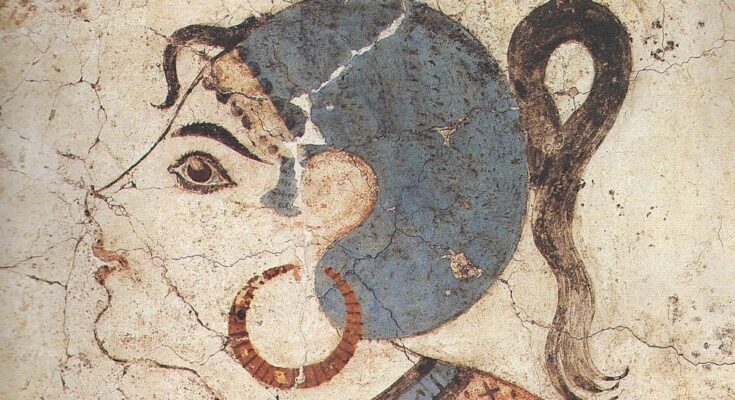For the first time, scientists have recently obtained genetic material and analyzed genome sequences from the ancient Minoans and Mycenaeans, who lived three to five thousand years ago.
The new analysis suggests that the Minoans and Mycenaeans shared a great deal of their genetic heritage.
Dr Iosif Lazaridis from Harvard Medical School in Massachusetts and colleagues focused on burials from the Minoan civilization, which flourished on the island of Crete from 2,600 to 1,100 BC, and the Mycenaean culture, which existed across Greece from 1,600 to 1,100 BC.
Dr Lazaridis explained that most of the people who created these civilizations appear to be local, deriving between 62 percent and 86 percent of their ancestry from people who introduced agriculture to Europe from Anatolia (modern Turkey) in Neolithic times beginning about seven thousand years ago.
Genetic differences and similarities between Minoans and Mycenaeans
But the Bronze Age Mycenaean and Minoan skeletons revealed ancestry from populations originating in either the Caucasus mountains or Iran. Between 9 percent and 17 percent of their genetic make-up came from this source.
In addition, the team’s paper in the journal, Nature, reports, the Mycenaeans—but not the Minoans—show evidence of genetic input from people who lived further north on the flat grasslands that stretch from eastern Europe to Central Asia. Between four percent and sixteen percent of their ancestry came from this northern source.
While the Mycenaeans are known to have spoken an early form of Greek, the earliest recorded language spoken by the Minoan people on Crete, known as Linear A, can be read but not translated, implying that it belongs to a distinct but unknown group of languages.
Modern Greeks descendants of Mycenaeans
After genetic analysis, the Mycenaeans have also been linked to modern Greek people.
New emerging DNA evidence suggests that living Greeks are indeed descendants of the ancient Mycenaeans, who ruled mainland Greece and the Aegean Sea from 1,600 BC to 1,200 BC.
The evidence comes from a study in which scientists analyzed the genes from the teeth of nineteen people across various archaeological sites within mainland Greece and Mycenae. A total of 1.2 million letters of genetic code were compared to those of 334 people across the world.
Genetic information was also compiled from a group of thirty modern Greek individuals in order to compare it to the ancient genomes. This allowed researchers to effectively plot how individuals were related to one another.
After comparing the DNA of modern Greeks to ancient Mycenaeans, a genetic overlap was discovered that suggests that these ancient Bronze Age civilizations laid the genetic groundwork for the contemporary Greek people.
Mycenae, the kingdom of the mythical king Agamemnon, is the most important and richest palatial center of the Late Bronze Age in Greece.
Myths related to its history have inspired poets and writers over many centuries since the Homeric epics and the great tragedies of the Classical period.



